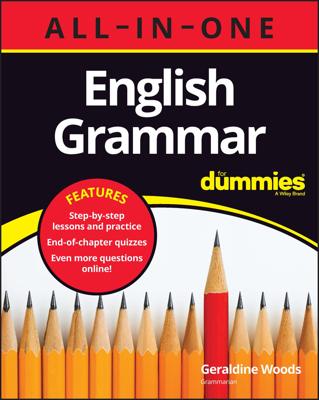If you want to pass your English grammar test or sound like you know what you are talking about at work, you should know the difference between adjectives and adverbs so you can select the form you need. Here are some guidelines:
Many adverbs end in –ly: Strictly is an adverb, and strict is an adjective. Nicely is an adverb, and nice is an adjective. Generally is an adverb, and general is an adjective. Lovely is a . . . gotcha! You were going to say adverb, right? Wrong. Lovely is an adjective.
Some adverbs don’t end in –ly: Soon, now, home, fast, and many other words that don’t end in -ly are adverbs, too.
One of the most common adverbs, not, doesn’t end in ly: Not is an adverb because it reverses the meaning of the verb from positive to negative. Loosely speaking, not answers the question how. (How are you going to the wedding? Oh, you're not going!)
The best way to tell if a word is an adverb is to ask the four adverb questions: how, when, where, and why. If the word answers one of those questions, it’s an adverb.
Identify the adjectives and adverbs in the following sentences.
Adjectives describe nouns or pronouns, and adverbs describe verbs, adjectives, or other adverbs.
Here are some special situations that give even native English speakers problems:
Deciding when to use good vs well: Good is an adjective, and well is an adverb, except when you’re talking about your health:
I am good.
Good is an adjective here. The sentence means I have the qualities of goodness or I am in a good mood. Or, the sentence is a really bad pickup line.
I am well.
Well is an adjective here. The sentence means I am not sick.
I play the piano well.
This time well is an adverb. It describes how I play. In other words, the adverb well describes the verb play. The sentence means that I don’t have to practice anymore.
Dealing with bad and badly: Confusing bad and badly is one of the most common errors. Check out these examples:
I felt badly.
I felt bad.
The –ly tells you that badly is an adverb, and bad is an adjective. Which one should you use? Well, what are you trying to say? In the first sentence, you went to the park with your mittens on. The bench had a sign on it: “WET PAINT.” The sign looked old, so you decided to check. You put your hand on the bench, but the mittens were in the way. You felt badly — that is, not very accurately. In the second sentence, you sat on the bench, messing up the back of your coat with dark green stripes. When you saw the stripes, you felt bad — that is, you were sad.
Distinguishing between adjectives and adverbs that look the same: Odd words here and there (and they are odd) do double duty as both adjectives and adverbs. They look exactly the same, but they take their identity as adjectives or adverbs from the way that they function in the sentence. Take a look at these examples:
Upon seeing the stop sign, Abby stopped short. (adverb)
Abby did not notice the sign until the last minute because she is too short to see over the steering wheel. (adjective)
Lola’s advice is right: Abby should not drive. (adjective)
Abby turned right after her last-minute stop. (adverb)
Abby came to a hard decision when she turned in her license. (adjective)
Lola tries hard to schedule some time for Abby, now that Abby's carless. (adverb)

